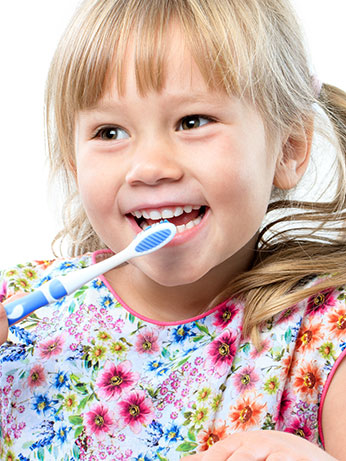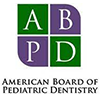Radiographs (X-Rays) are a vital and necessary part of your child’s dental diagnostic process. Without them, certain dental conditions can be missed.
Radiographs allow dentists to diagnose and treat health conditions that cannot be detected during a clinical examination, and they detect much more than cavities. For example, radiographs may be needed to survey erupting teeth, diagnose bone diseases, evaluate the results of an injury, or plan orthodontic treatment. If dental problems are found and treated early, dental care is more comfortable for your child and more affordable for you.

The American Academy of Pediatric Dentistry recommends radiographs and examinations every six months for children with a high risk of tooth decay. On average, most pediatric dentists request radiographs approximately once a year. Approximately every 3 years, it is a good idea to obtain a complete set of radiographs, either a panoramic and bitewings or periapicals and bitewings.
Pediatric dentists are particularly careful to minimize the exposure of their patients to radiation. With contemporary safeguards, the amount of radiation received in a dental X-ray examination is extremely small. The risk is negligible. In fact, dental radiographs represent a far smaller risk than an undetected and untreated dental problem. Today’s equipment filters out unnecessary x-rays and restricts the x-ray beam to the area of interest. High-speed film and proper shielding assure that your child receives a minimal amount of radiation exposure.
Xylitol - Reducing Cavities
The American Academy of Pediatric Dentistry (AAPD) recognizes the benefits of xylitol for the oral health of infants, children, adolescents, and persons with special health care needs.
Mothers chewing xylitol gum 2-4 times per day can reduce cavities up to 70% in their children aged 3 months to 5 years.
Studies using xylitol as either a sugar substitute or a small dietary addition have demonstrated a dramatic reduction in new tooth decay, and some reversal of existing dental cavities. Xylitol provides additional protection that enhances all existing prevention methods. The xylitol effect is long-lasting and possibly permanent. Low decay rates persisted years after the trials completed.
Xylitol is distributed throughout nature in small amounts. Some great sources of xylitol are fruits, berries, mushrooms, lettuce, hardwoods, and corn on the cob. One cup of raspberries contains less than one gram of xylitol.
Studies suggest that consuming 4-20 grams of xylitol per day divided into 3-7 consumption periods produces the most positive results. Greater results did not occur in larger consumption and may lead to diminishing results. Similarly, consumption frequency of less than 3 times per day showed no effect.
Visit your local health food store or search online to find products containing 100% xylitol. Consult your dentist about xylitol, and the amount you should specifically consume.




 Website Powered by Sesame 24-7™
Website Powered by Sesame 24-7™